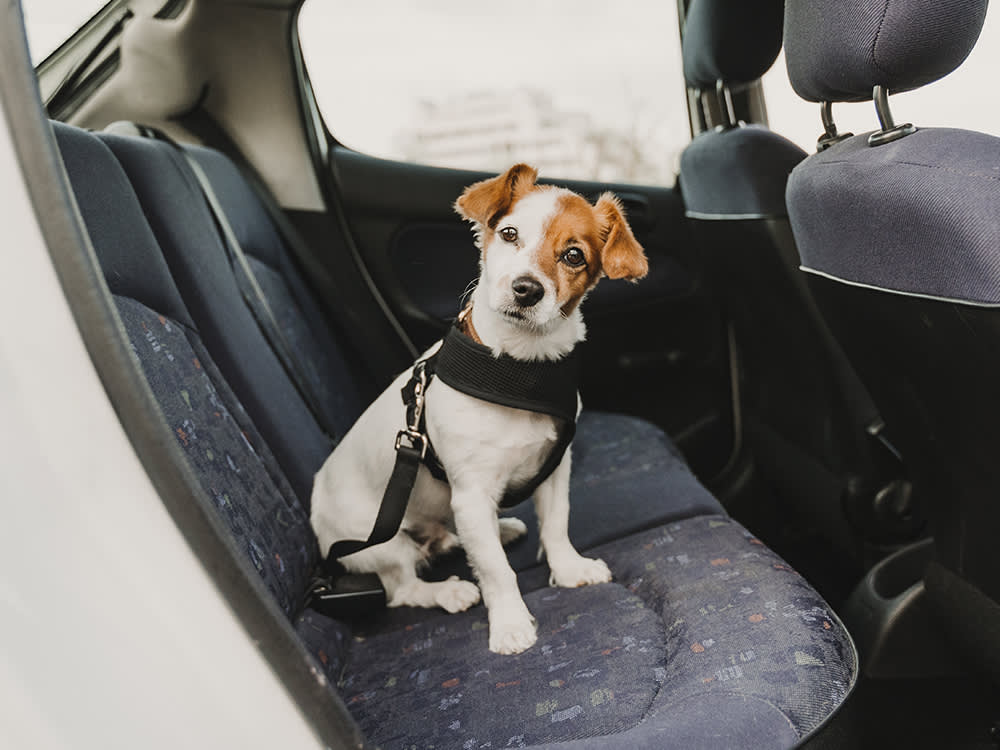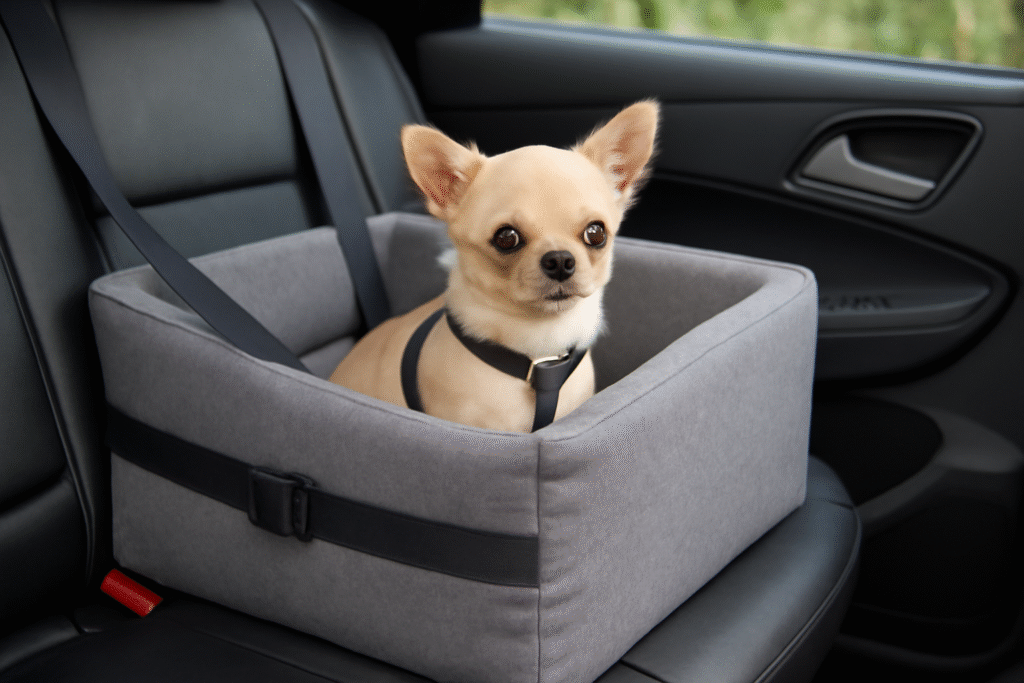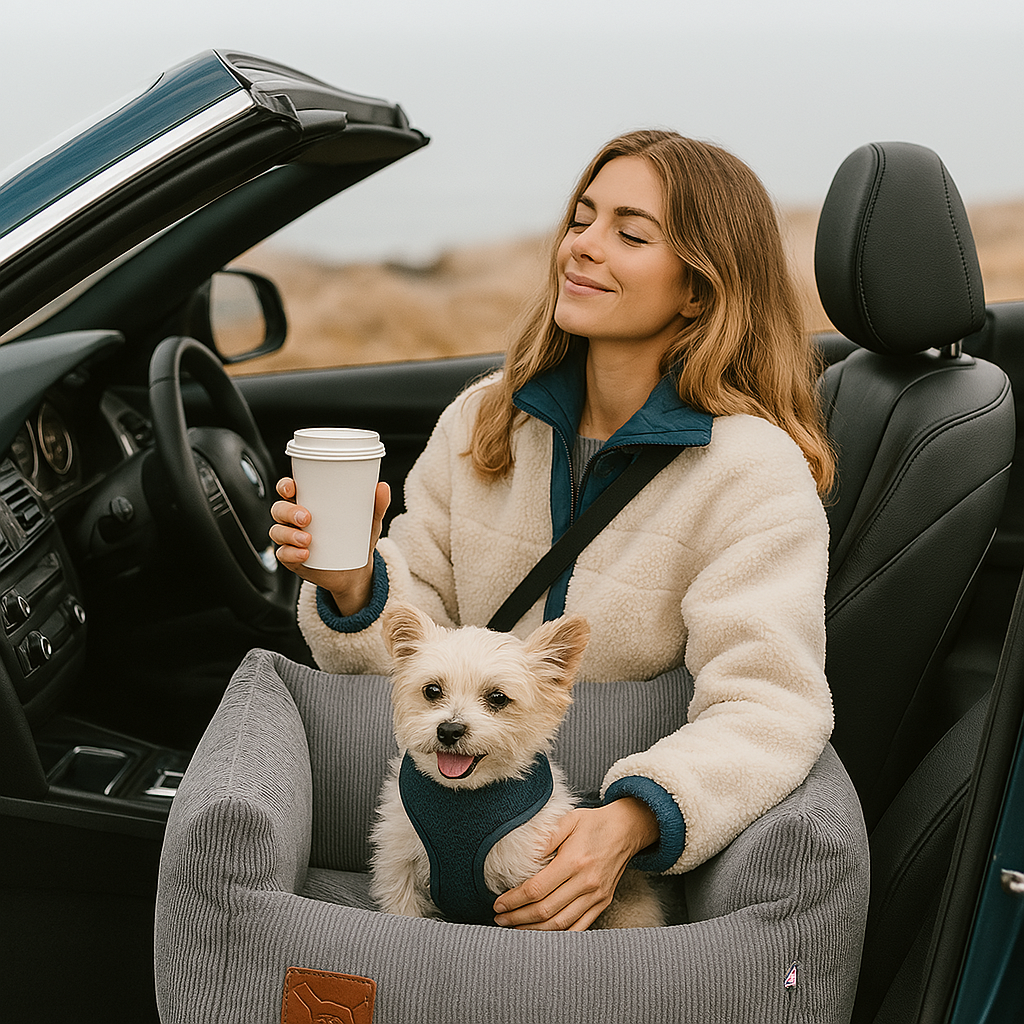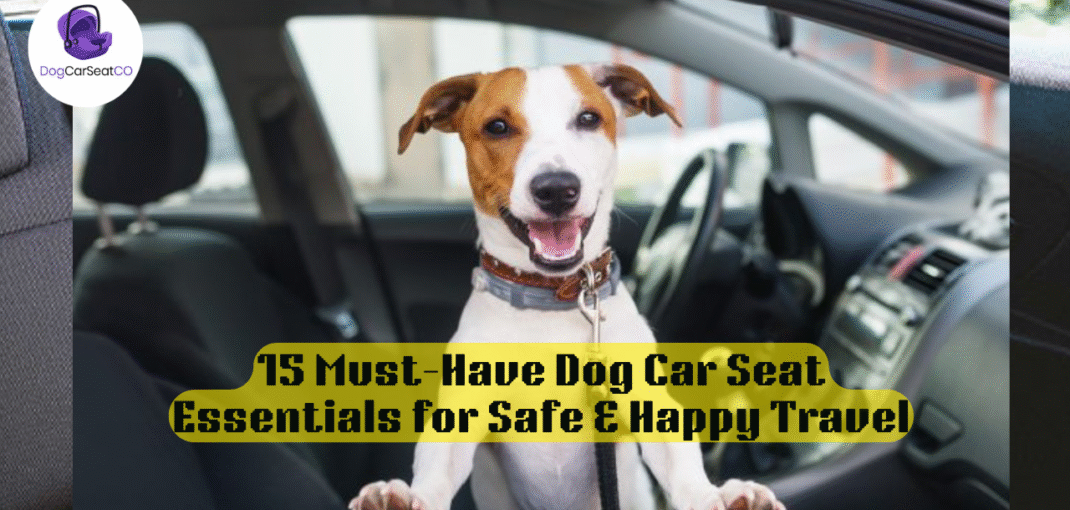Introduction to Dog Car Travel Essentials
Planning a road trip with your furry companion? Then you already know that packing treats and a leash isn’t enough. Travelling with your dog requires forethought, preparation, and—most importantly—the right tools. And yes, the dog car seat tops the list of must-haves.
Whether you’re heading to the vet, cruising cross-country, or just popping over to the pet store, your dog deserves safety, comfort, and a bit of luxury. Let’s face it, dogs are family. And just like you wouldn’t let your child ride unbuckled, your pup should never be left unsecured.

Why Every Dog Parent Needs a Dog Car Seat
Let’s cut to the chase—car rides can quickly become dangerous without a dog car seat. An unrestrained pet can become a projectile in the event of a sudden stop or collision. Even at low speeds, the force can cause serious injury to your dog and passengers.

Besides safety, there’s the distraction factor. A dog bouncing from window to window, hopping onto your lap, or pacing can easily divert your focus. A proper dog car seat keeps your dog calm and contained, so you can keep your eyes on the road.
Benefits of Using a Dog Car Seat
Still wondering if it’s worth investing in a dog car seat? Here’s why it’s a game changer:
– Injury prevention: Protects dogs in case of accidents.
– Minimises anxiety: Dogs feel safer in familiar, confined spaces.
– Prevents distractions: Keeps dogs from climbing into the front seat.
– Improves visibility: Booster-style seats elevate small dogs so they can look out the window (and reduce motion sickness).
– Keeps your car clean: Many models include washable covers and waterproof liners.
Types of Dog Car Seats
Just like humans have options (booster seats, racing harnesses, baby seats), dogs do too! Depending on your dog’s size, temperament, and the type of car you own, you’ll want to choose from:

– Booster Seats: Ideal for small dogs, they elevate your pup for a better window view.
– Bucket-Style Seats: Cosy, padded, and great for cuddly pups who love curling up.
– Hammock Car Seats: These protect the back seat while giving your dog a wider surface to move around.
– Console Seats: Best for toy breeds that like sitting between the driver and passenger.
– Crash-Tested Seats: Certified models offer maximum safety (think: Sleepypod Clickit Sport or Gunner Kennels).
Choosing the Right Dog Car Seat
Buying a dog car seat isn’t one-size-fits-all. Here’s what to consider:
– Size & Weight: Match the seat to your dog’s weight class (check specs carefully).
– Breed Type: Some dogs prefer space (Labs) while others love snuggles (Pugs).
– Car Compatibility: Will it work with your seatbelts, headrests, or ISOFIX anchors?
– Material Quality: Look for durable, chew-resistant, waterproof fabrics.
– Ease of Cleaning: Removable covers and machine-washable materials are a must.
– Installation: Choose simple setups that don’t require extra tools.
Crash-Tested Dog Car Seats
If you could only buy one thing for your dog’s travel safety, this is it. Crash-tested dog car seats are designed using the same technology as human restraint systems. The National Highway Traffic Safety Administration (NHTSA) doesn’t regulate pet seats (yet), but organisations like the Centre for Pet Safety (CPS) do conduct tests.
Top-rated options include:
– Sleepypod Clickit Sport – Ideal for small to medium dogs
– Gunner G1 Kennel – Extremely rugged, great for large dogs
– Kurgo Car Harness & Seat Belt – Budget-friendly but crash-test approved
Dog Seat Belts vs. Dog Car Seats
Let’s not get confused. Dog car seats and dog seat belts serve similar but distinct purposes:
Dog Seat Belts:
– Tether harness to seatbelt buckle
– Cheaper, minimalistic
– Best for large breeds
– May allow movement in the backseat
Dog Car Seats:
– Full containment and padding for comfort
– Higher cost, but better for long trips
– Best for small to medium breeds
– Limits movement to reduce anxiety
Conclusion:
Traveling with your dog isn’t just about getting from point A to B—it’s about making the journey just as joyful and safe for your four-legged friend as it is for you. The truth is, every car ride, no matter how short, holds the potential for unforeseen situations. That’s why a dog car seat isn’t a luxury—it’s a necessity.
By investing in the right dog car seat and travel essentials, you’re not just ticking off a checklist—you’re committing to your dog’s comfort, health, and safety. From crash-tested seats and harnesses to cosy blankets, hydration tools, and first-aid kits, each item adds a layer of preparedness that makes all the difference.
Your dog depends on you to make smart decisions—ones that prioritize both fun and protection. With the right gear and a bit of planning, your pup will not only be safer but also happier during every trip.
So the next time you’re gearing up for a ride, don’t just grab your keys. Make sure you’ve got your furry copilot’s essentials ready to go. After all, every good journey deserves great company—and nothing says love like a safe ride in a comfy dog car seat.
FAQs:
What is a dog car seat, and why do I need one?
A dog car seat is a specially designed seat that secures your pet during travel. It prevents distractions, reduces injury risk in crashes, and provides a cozy, stable place for your dog during rides.
Are dog car seats safe for long road trips?
Yes! In fact, they are essential for long trips. A properly fitted car seat can reduce motion sickness, prevent injuries, and help your dog stay relaxed and secure for hours on the road.
What’s the difference between a dog car seat and a booster seat?
A booster seat is a type of dog car seat designed for small dogs. It elevates them so they can look out the window, which can reduce anxiety and motion sickness.
Can I use a regular pet bed instead of a dog car seat?
No. While pet beds provide comfort, they lack the safety restraints required to secure your dog. Dog car seats come with harness attachments or tether systems that regular beds do not offer.
Are crash-tested dog car seats really worth the cost?
Absolutely. Crash-tested seats meet specific safety standards and are designed to protect pets in high-impact situations. Brands like Sleepypod and Gunner offer proven safety through rigorous testing.
What size dog car seat do I need?
Choose one based on your dog’s weight and dimensions. Most brands offer guidelines by breed and weight range. Always ensure your dog can sit, lie down, and turn around comfortably.
How do I install a dog car seat?
Most dog car seats attach via seatbelts or ISOFIX anchor points. Some models require a combination of seatbelt and headrest straps. Always follow the manufacturer’s instructions for secure installation.
Do dog car seats work for large breeds?
Yes, but options are more limited. Large dogs may benefit more from crash-tested harnesses or travel crates that anchor into the vehicle. Some hammocks and backseat extenders are also suitable.
Is it legal to drive with an unrestrained dog in the car?
In many places, it’s either discouraged or illegal. For example, several U.S. states and European countries have laws mandating pet restraints. Unrestrained pets can result in fines and liability in accidents.
Can I use a dog car seat in the front seat?
It’s not recommended unless the airbag can be disabled. Front airbags can injure small dogs in the event of deployment. The safest place is the back seat or cargo area with proper restraints.
What if my dog doesn’t like being in a car seat?
Introduce the seat gradually. Let your dog sniff and sit in it indoors first. Use treats, toys, and short trips to build positive associations. Patience and consistency are key.
Do dog car seats help with motion sickness?
Yes. Elevated booster seats allow dogs to see outside, which can reduce motion-related anxiety. Combine this with proper hydration and breaks to help your dog travel comfortably.
Can multiple dogs share the same car seat?
Only if it’s designed for two dogs and both can be securely restrained. Otherwise, it’s best to provide each dog with their own seat or safety setup to avoid overcrowding and tangling.
How often should I clean the dog car seat?
At least once every few trips, or after messy outings. Most seats have removable, washable covers. Keeping the seat clean also helps reduce odors and bacteria build-up.
Are there any alternatives to dog car seats?
Yes. Crash-tested dog harnesses, soft travel crates, hammocks with seatbelt tethers, and car barriers are alternatives. The best option depends on your dog’s size, temperament, and travel needs.

